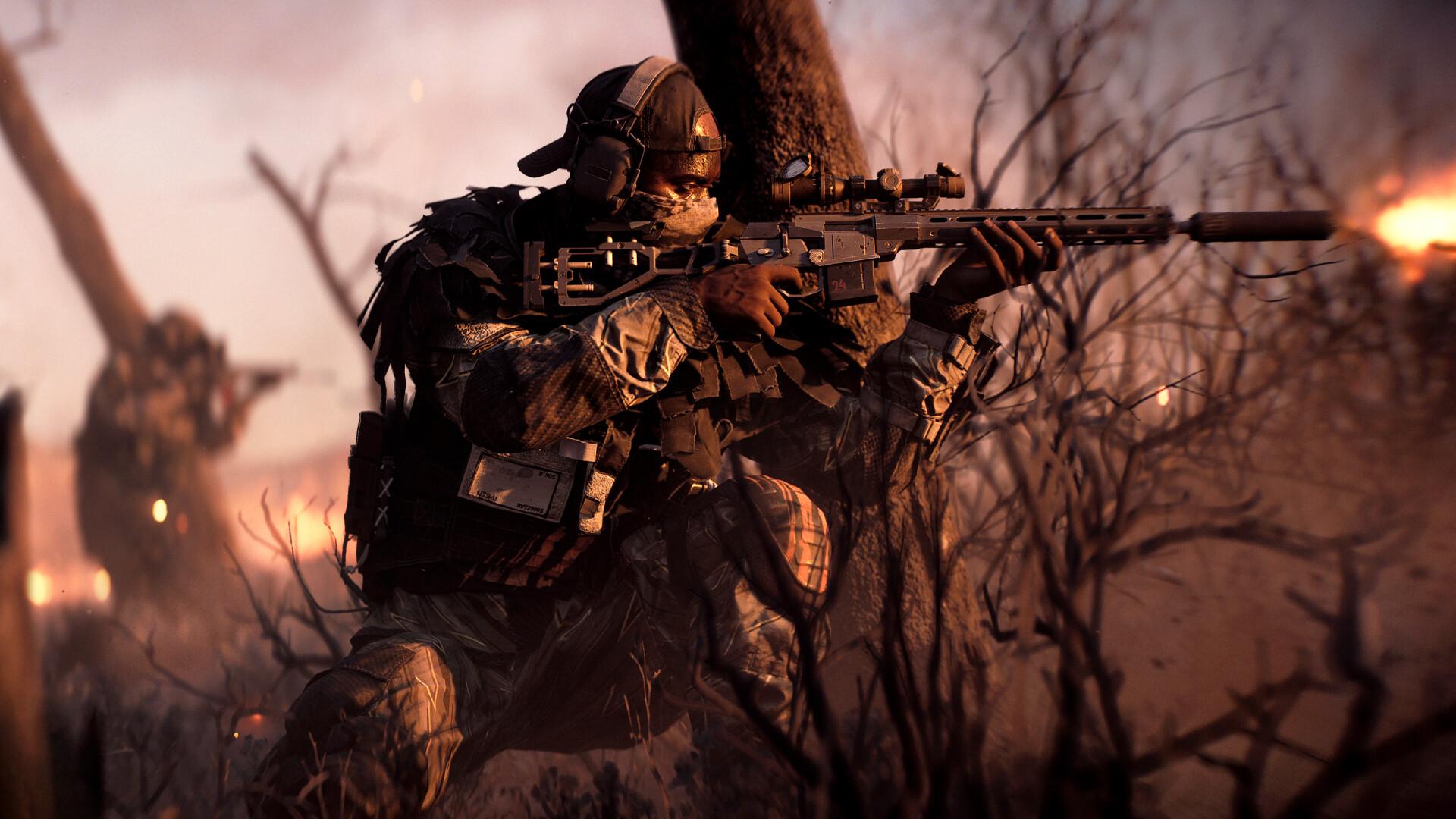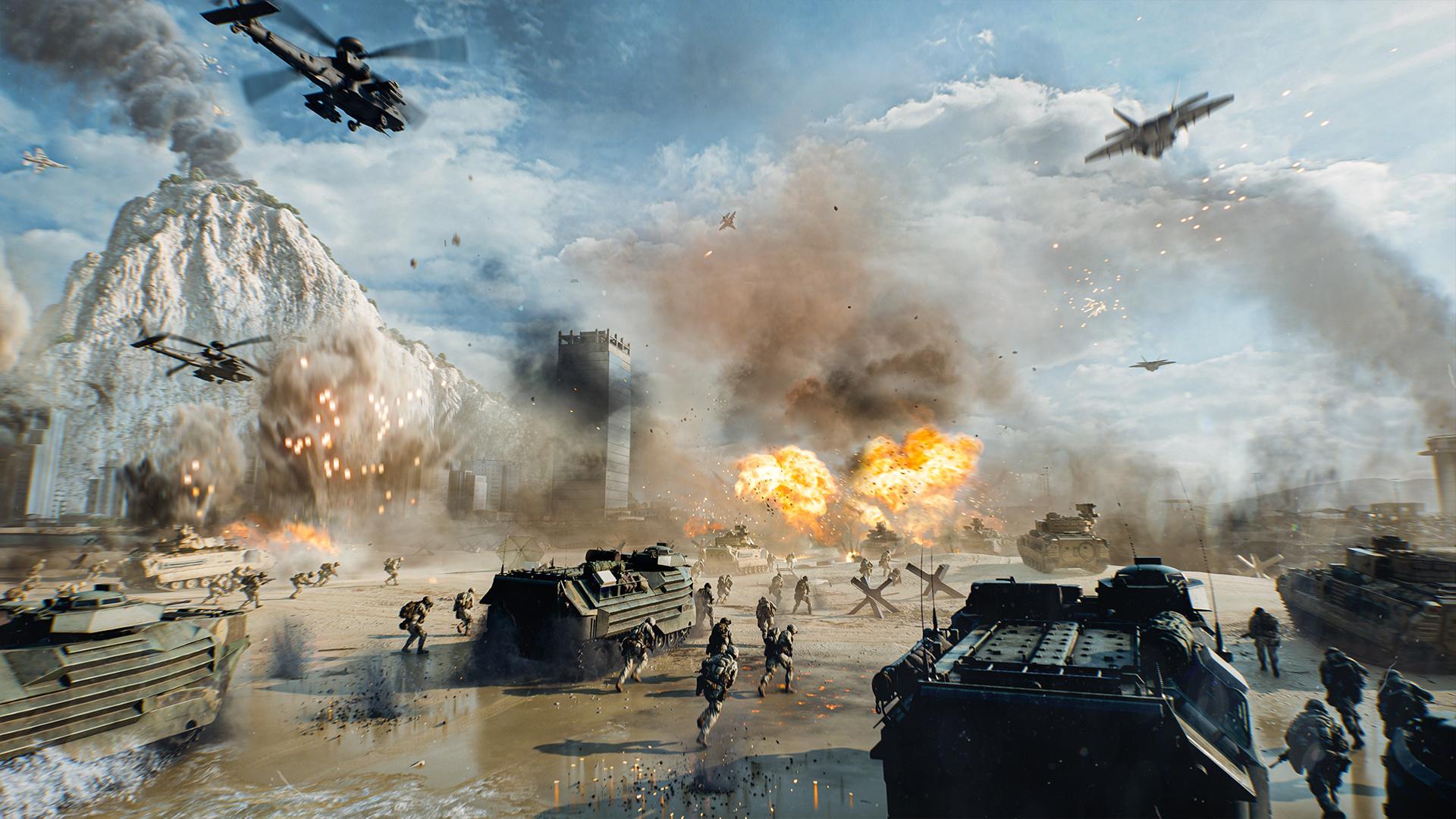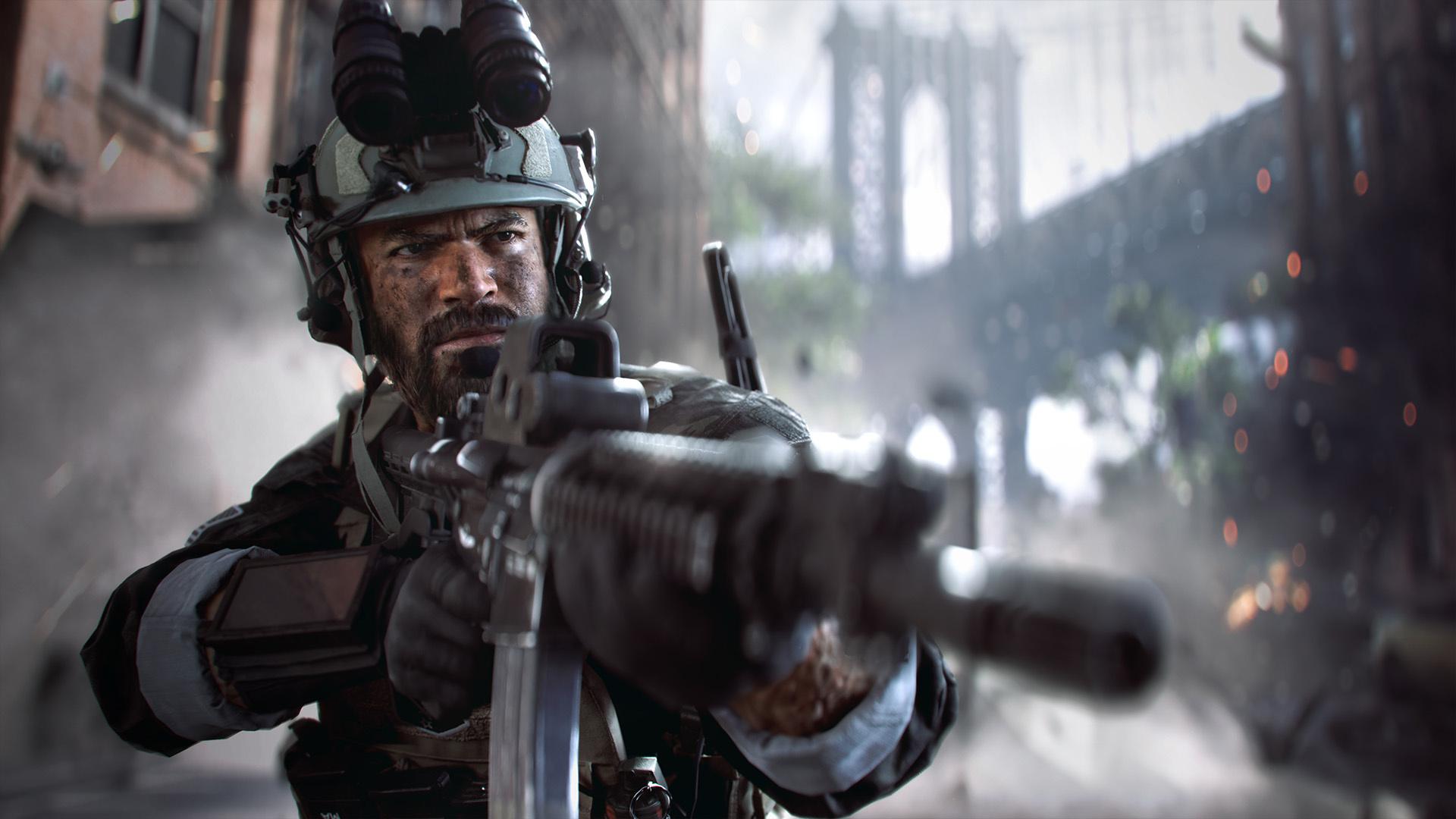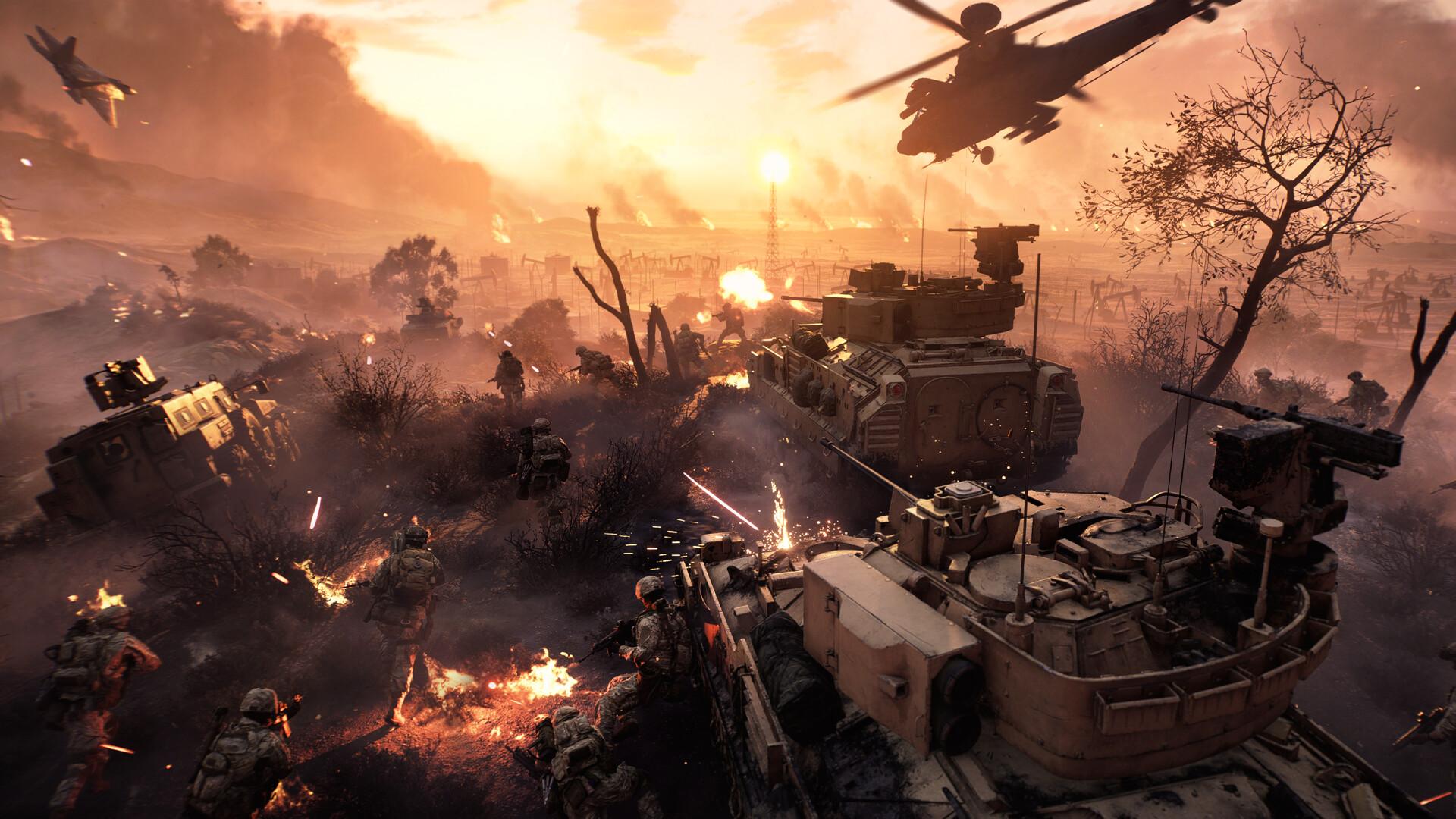Existing User Log In
New User Registration
Register for a free account to gain full access to the VGChartz Network and join our thriving community.





America - Front


America - Back

Battlefield Studios
Shooter
 (Add Date)
(Add Date) (Add Date)
(Add Date) (Add Date)
(Add Date)
| Owners: | 0 |
| Favorite: | 0 |
| Tracked: | 0 |
| Wishlist: | 0 |
| Now Playing: | 0 |
Reviewer's Note: Given the plethora of flaws, there's no avoiding SPOILERS for the campaign – as though it matters anyway. Read on at your own risk.
The phrase "back to basics" is bandied around constantly, but with good reason: signalling a course correction after previous errors can work to reignite a fanbase's interest. Speaking as a dismayed fan shell-shocked by the series' decline since leaving World War I, Battlefield 6 is essentially a mea culpa in game form. From odd naming schemes & multiplayer dynamics (Battlefield V), to missing campaigns & buggy launches (2042), the Rolodex of chefs tasked with cooking this mainline entrée – altogether coined "Battlefield Studios" – only wanted to follow an easy recipe. Considering the self-imposed face-plants they're avoiding, caution is warranted; on the other hand, how high can one truly reach with tempered ambition?
That question becomes immediately pertinent with the series' most creatively devoid campaign to-date. Rather than the obvious verisimilitude of a villainous Russia giving NATO trouble, Daniel Bowditch & Company's script sloppily frames a Private Military Company (PMC) as its bitter rival. For whatever reason, the country of Georgia believes greener pastures await with the unsubtly-named "Pax Armata". What's the context for their impressive influence and firepower, you ask? Nothing remotely tangible; even worse, in this backwards world, successfully assassinating NATO's leader inspires several small NATO countries to quickly change sides. Just stop thinking and enjoy explosions that'd make Michael Bay flush with envy.
Bay's envy wouldn't be limited to DICE's renowned destruction tech, but also the beginning's unabashed patriotism. Even though the tutorial's plot setup is about Sergeant Murphy's squad & NATO forces being ambushed by Pax, of course we're not going to forget the Stars & Stripes. Of course a mission that's been relatively smooth sailing will be abruptly halted after the getaway helicopter is shot down. Of course there's a heroic last stand in said helicopter – coupled with Henry Jackson's swelling orchestral music – as each of Murphy's mates dies in slow-mo and gingerly collapses atop a blood-stained American flag. And, of course, Murphy has to be the lone survivor who's carried in the same rescue heli as his fallen comrades. Bonus points for having Murphy touch the American flag draped over their stacked bodies before blood starts seeping through it.
It's easy to snicker and jeer at how this ham-fisted delivery eclipses 13 Hours' moment of a Benghazi insurgent shooting an American flag, but it also sits in stark contrast to the gray sludge across every other mission. There's little else here aside from modern military clichés and Alpha-Zulu-Tango dialogue stitched together through flashbacks. To think a boardroom of directors, writers, and narrative designers (over twenty in total) considered this compelling! Past the awkwardness of you disinterring information every other character already knows, it also deflates character suspense. With three of the four members in Murphy's post-tutorial squad alive in present-day cutscenes, everyone knows what happened to the fourth – who was also team leader in said flashbacks.
Much of its campaign design is as stultifying as its narrative is vacuous.
Admittedly, one small positive to its flashback-centric structure is enabling glimpses into each squadmates' PoV and their disparate roles, as with multiplayer: Assault, Engineer, Support, & Recon. Opening up the tactical menu and utilizing a teammate's class ability (e.g. Recon highlighting nearby enemies) gives some illusion of cooperatively defeating overwhelming odds. It goes without saying at this point that these mechanics rank among the most satisfying: the kinesthetic punch of each weapon, crisp audio feedback, detailed destruction tech, and so on and so forth. Frostbite Engine still delivers the goods.
Polished tactility is like good seasoning atop a foul entrée if the campaign itself doesn't work. Whether judging against previous examples or its closest blockbuster competitor (Call of Duty), this ranks among the most arbitrarily restrictive thus far. It's a game where you can shoot up a long vertical zip line, go down the same way to double-check for collectible dog tags, and hit a fail state for going out of bounds. The slightest of deviations can result in a "leaving the combat zone" countdown warning. It's common for this clade of linear shooters to put up guardrails, but rarely – if ever – has it been so desultory. Even its one mission with initial open-world flexibilities can't help but devolve into little more than a simulator ride at the halfway point.
Its linearity is compounded even further by not understanding those fundamentals either. 2019's Modern Warfare campaign may have been confused altogether, but Clean House was a great exercise in tightly controlled pacing; wresting away player freedom worked there because of appropriate narrative stakes. A tight formation while slowly moving up a staircase matches what trained military forces do in stealthy scenarios. That sequence is half-heartedly Xeroxed here, with the added bonus of a sledgehammer that can obliterate soft walls, but there's no careful direction – no establishing stakes to its urban warfare. This also serves as a microcosm of the campaign overall: bad setups leading to weak payoffs.

Of course, these preceding paragraphs may be immaterial to the average Battlefield or FPS fan. That makes sense in the former's case; after all, anecdotal last-second victories and triumphal feats of valor within grand arenas feel more exhilarating than most of the series' globe-trotting narratives put to paper. Instead of the oh-shit! moments captured via choreographed action, the franchise's purest magic stems from emergent play. A well-placed rocket destroys a helicopter, which comes crashing against the side of a building, which then creates a limited window for a counter-offensive to the next objective, and so on and so on. Every match a unique story.
Emphasizing these multiplayer narrative beats through comradery has improved since 2042's launch; hell, DICE got the message and overhauled 2042's Specialist structure afterwards, but the damage had already been done. Launching out of the gate with a simpler class system with more narrowly defined roles was destined to be met with praise. Sure, there's some overlap, but it makes sense: any squadmate can heal another downed squadmate, but only the Medic's kit can do it instantaneously with shock paddles. There's a delineated give-and-take between the four aforementioned classes, most importantly in secondary gadgets. Not landing headshots as Recon isn't a huge deal if you simply whip out a quadcopter drone to scan nearby enemies and short-circuit explosive equipment: mines, mortars, and so on. It doesn't seem like much, but it can genuinely turn the tide.
Retreating back to the familiar and comfortable likely helped ensure no (current) map feels too big for its own good. They're certainly still impressive in measured square footage, yet not to a ludicrous degree as though your actions feel inconsequential. Whether materializing at HQ, on safe squadmates, or any friendly vehicles with room, there's typically a consistent flow of spawn sources. One unfortunate death could actually be an opportunity to take the gunner seat in a fresh helicopter, dump a fusillade of rounds onto a contested control point, parachute behind enemy lines, and take control of a hardpoint. All in a day's work!
Getting the size (mostly) right isn't the sole determinant of a map's quality, of course. Certain fans may not care for the more condensed 16-man map varieties, but those have a valid place; and since its class structure has drifted away from Call of Duty, there's enough difference to appreciate its intention. Even if they're not amazing by those standards, the greater share of ire goes towards the wild inconsistency of its big 64-man maps. This is best exemplified in Breakthrough mode: attackers must fully capture one or both points of a zone before advancing to the next zone. The first portion of Mirak Valley is a vicious meat grinder for attackers; one control point is comfortably closer to the defenders' HQ and its layout is essentially an open field with some scattered cover and trenches. There's no cohesiveness, and it's genuinely insane that that's the first section.
As with any multiplayer-focused shooter, the show's expected to go on for years with beefy updates. You know this restaurant and it's serving the usual: new modes, new maps, new weapons, more battle passes, and so on. Admittedly, this review arrives at a strange crossroads wherein both a new map and separate free-to-play Battle Royale, Battlefield REDSEC, recently released (not considered for this review). While it's fair to credit the pace of new content, that shouldn't shirk BF Studios' responsibility to make the most enthralling launch possible. And given the modest original nine map count, it's certainly not a huge ask to have expected consistency.
A more fitting place to apply "consistency" would be towards its servers. Certainly not perfect by any means; hell, the first time you clip through a vehicle or get stuck in the geometry is like a rite of passage – a "Battlefield Baptism", if you will. All in all, though, the launch-window experience has been a relatively smooth one: it's easy to recall the rare times I've disconnected or ran into a major bug because of their infrequency after dozens of matches. It's fair to contend that that should be the norm anyways (especially for $70 Standard or $100 Phantom Edition price tags), but perhaps some credit is warranted in light of 2042's launch debacle.
The objective for this goulash of game studios – and EA by extension – was clear and simple: give the fans their comfort food. No skipping on a campaign, no peculiar multiplayer identity crises, and no drastic aesthetic choices that run contrary to a modern military shooter. Although that is the better overall decision, there's a certain irony as well. Its campaign is so boring that it accidentally highlights why past exclusions made sense, and the best quality of its multiplayer is hitting many notes that've been played before; then again, who doesn't like listening to a good 'ole tune now and again?
Contractor by trade and writer by hobby, Lee's obnoxious criticisms have found a way to be featured across several gaming sites: N4G, VGChartz, Gaming Nexus, DarkStation, TechRaptor, and Cubed3! He started gaming in the mid-90s and has had the privilege in playing many games across a plethora of platforms. Reader warning: each click given to his articles only helps to inflate his Texas-sized ego. Proceed with caution.









